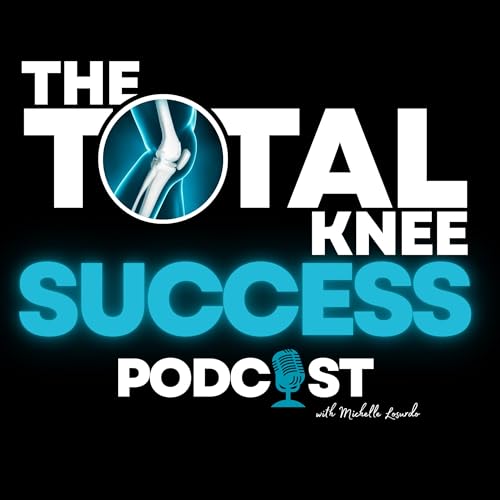In Episode 16 of the Total Knee Success Podcast, Michelle explains how surgical incisions heal after knee replacement — from the healing ridge to safe showering and scar massage. She discusses drainage signs, modern closure options like medical-grade adhesives and wound VACs, silicone gels, collagen supplementation research. You’ll come away knowing what’s normal, when to call your surgeon, and how to protect your skin for steady, confident recovery. As an Amazon Associate I earn from qualifying purchases.
Collagen Gummies https://amzn.to/3KXnA0x. Organic Collagen Peptide Powder https://amzn.to/43qcuYf. Free Up Professional Massage Cream (what we use in the clinic) https://amzn.to/3WTsK05. Medical Grade Silicone Scar Sheets https://amzn.to/47mg0nH
Medical Disclaimer. The Total Knee Success Podcast is for educational purposes only. It is not a substitute for professional medical advice, diagnosis, or treatment. Always seek the advice of your surgeon, physical therapist, or other qualified health provider with any questions you may have regarding your specific condition or care. Never disregard professional advice or delay seeking it because of something you heard on this podcast. This podcast is not affiliated with Michelle’s clinic or teaching roles.
Amazon Affiliate Disclaimer. As an Amazon Associate, I earn from qualifying purchases. This means that if you click on a product link in my show notes or at TotalKneeSuccess.com and make a purchase, I may receive a small commission at no extra cost to you. These commissions help support the podcast and allow me to keep creating free, evidence-based content. I only share products that are commonly recommended for knee replacement and that patients have found helpful.
References
Jacobson ME, et al. Nerve injury during total knee arthroplasty. Clin Orthop Relat Res. 2007;464:135-140. doi:10.1097/BLO.0b013e31812f7c2c
Kerver AL, Leliefeld PH, den Hartog D, Kleinrensink GJ. The surgical anatomy of the infrapatellar branch of the saphenous nerve. J Anat. 2013;222(3):328-335. doi:10.1111/joa.12024
Hartin NL, et al. Wound dehiscence following total knee arthroplasty. J Arthroplasty. 2020;35(12):3647-3653. doi:10.1016/j.arth.2020.07.008
Lee J, et al. Modern wound closure techniques in total knee arthroplasty. J Orthop Surg Res. 2022;17(1):471. doi:10.1186/s13018-022-03328-3
Anderson MJ, et al. Allergic contact dermatitis from surgical adhesives and dressings. Dermatitis. 2014;25(1):15-20. doi:10.1097/DER.0000000000000005
Wilke BK, et al. Skin adhesives versus staples for wound closure after knee arthroplasty: a meta-analysis. J Arthroplasty. 2021;36(7):2452-2459. doi:10.1016/j.arth.2021.03.034
 11 分
11 分 10 分
10 分 10 分
10 分 12 分
12 分 15 分
15 分 13 分
13 分 17 分
17 分 13 分
13 分
